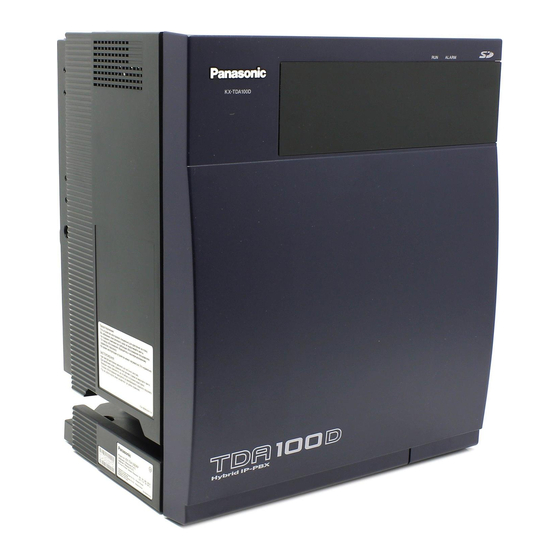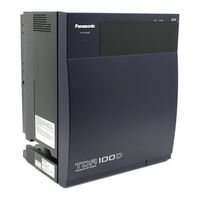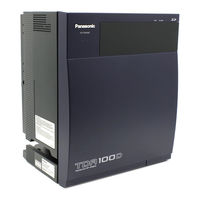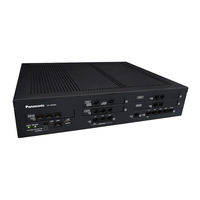
Panasonic KX-TDA100D Manuals
Manuals and User Guides for Panasonic KX-TDA100D. We have 6 Panasonic KX-TDA100D manuals available for free PDF download: Features Manual, User Manual, Installation Manual, Programming Manual, Getting Started
Panasonic KX-TDA100D Features Manual (424 pages)
hybrid ip-pbx
Table of Contents
-
-
Call Waiting41
-
VIP Call58
-
Call Pickup78
-
Predialling82
-
Trunk Access100
-
Quick Dialling110
-
Hot Line111
-
Delayed Ringing116
-
Call Monitor120
-
Whisper OHCA126
-
Walking COS138
-
Off-Hook Monitor149
-
Mute150
-
Call Transfer162
-
Holding Features166
-
Call Hold166
-
Call Park169
-
Call Splitting171
-
Music on Hold172
-
Conference175
-
Privacy Release177
-
Paging Features178
-
Paging178
-
Broadcasting180
-
Doorphone Call182
-
Door Open184
-
External Sensor207
-
Caller ID210
-
Message Features217
-
Message Waiting217
-
Absent Message220
-
Fixed Buttons222
-
Dss Console223
-
Flexible Buttons224
-
LED Indication227
-
ISDN Extension250
-
E1 Line Service253
-
T1 Line Service255
-
PS Ring Group274
-
PS Directory277
-
Virtual PS282
-
Printing Message292
-
Timed Reminder306
-
Dial Tone307
-
TIE Line Service311
-
-
Group371
-
Tenant Service375
-
Time Service379
-
Manager Features384
-
PC Programming386
-
PT Programming389
-
Quick Setup393
-
Automatic Setup394
-
3 Appendix
409 -
Index
417
Advertisement
Panasonic KX-TDA100D User Manual (240 pages)
Hybrid IP-PBX
Table of Contents
-
1 Operation
15-
Making Calls29
-
Redial37
-
The Phone54
-
Mute84
-
Paging115
-
ICD Group128
-
-
Private Mode151
-
Before Operating151
-
-
Control Features176
-
-
-
4 Appendix
213-
Troubleshooting214
-
-
Index
233
Panasonic KX-TDA100D Installation Manual (156 pages)
Hybrid IP-PBX
Table of Contents
-
-
Unpacking32
-
DMPR Card58
-
-
External Sensor109
-
External Relay109
-
-
Relays120
-
Starting the PBX132
-
-
Troubleshooting144
-
Installation144
-
Connection145
-
Operation147
-
-
Index
151
Advertisement
Panasonic KX-TDA100D Programming Manual (68 pages)
Hybrid IP-PBX
Brand: Panasonic
|
Category: Conference System
|
Size: 2 MB
Table of Contents
-
-
-
Currency25
-
-
-
ARS Mode29
-
-
BRI TEI Mode35
-
DID Number35
-
DID Name35
-
-
DND Override39
-
-
-
Smdr50
Panasonic KX-TDA100D Programming Manual (68 pages)
Hybrid IP-PBX
Brand: Panasonic
|
Category: Conference System
|
Size: 1 MB
Table of Contents
-
-
-
Currency27
-
-
-
ARS Mode31
-
-
Trunk Name35
-
DID Number37
-
DID Name37
-
-
DND Override40
-
Panasonic KX-TDA100D Getting Started (32 pages)
Hybrid IP-PBX
Brand: Panasonic
|
Category: Telephone System
|
Size: 1 MB
Table of Contents
-
-
Making Calls30
-





